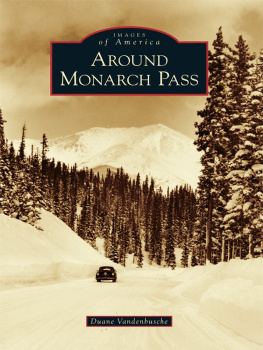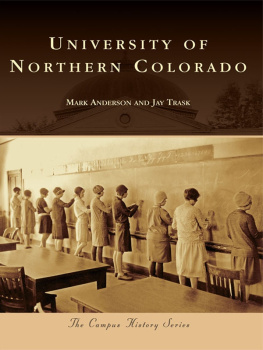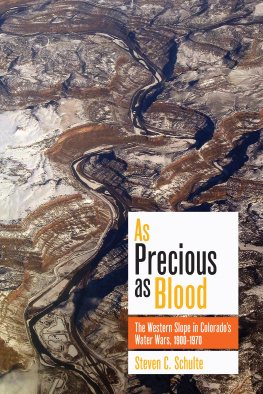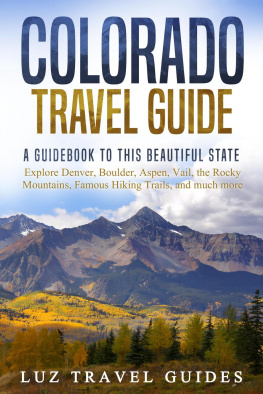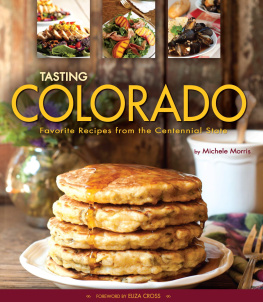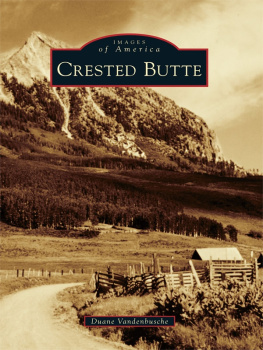
The Campus History Series
WESTERN STATE COLLEGE
MOUNTAIN MECCA

MOUNTAIN STUDIES. Five Western State students pose in the middle of the Elk Mountains near Crested Butte. Many Western State classes take advantage of the natural outdoor laboratory surrounding the school. Field trips in geology, biology, archaeology, and land and resource management do extensive work in the field. (Authors collection.)
ON THE COVER: A Western State skier sails off the Rozman Hill jump during an intercollegiate meet in 1953. Crested Butte Mountain, a few miles north and over 12,000 feet high, is in the background. (Authors collection.)
The Campus History Series
WESTERN STATE COLLEGE
MOUNTAIN MECCA
DUANE VANDENBUSCHE

Copyright 2014 by Duane Vandenbusche
ISBN 978-1-4671-3095-0
Ebook ISBN 9781439644607
Published by Arcadia Publishing
Charleston, South Carolina
Library of Congress Catalog Card Number: 2013954935
For all general information, please contact Arcadia Publishing:
Telephone 843-853-2070
Fax 843-853-0044
E-mail
For customer service and orders:
Toll-Free 1-888-313-2665
Visit us on the Internet at www.arcadiapublishing.com
This book is dedicated to Sven Wiik and all the Mountaineers of Western State College who have made it a great institution of learning.
CONTENTS
ACKNOWLEDGMENTS
Many individuals, libraries, and museums are to be thanked for the use of their photographs in this book. In particular, I would like to give special thanks to Nancy Gauss and the Western State Colorado University Library for allowing me to use pictures in the university collection.
During my 51 years as a professor and coach at Western State, my interviews with Ed Ali, Bob Arnold, Carol Baird Izett, Marvin Bohman, D.H. Cummins, Molly Gratton Fisher, Thor Groswold, Chris Johnson, Walter Jackson, Dolph Kuss, Rial Lake, John Mellon, Bruce Palmer, Crosby Perry-Smith, Sven Wiik, and Mickey Zahradka have greatly added to the information in this book.
Unless otherwise noted, the images in this book are from the authors collection. Additional images appear courtesy of the Western State Colorado University Library (WSCU), Francesca Pavillard-Cain (FPC), Dan Cress (DC), Crested Butte Mountain Heritage Museum (CBMHM), Gunnison Pioneer Museum (GPM), and G.J. Santelli (GS).
I am very grateful for the support, guidance, and wisdom of my editor, Stacia Bannerman, and Arcadia Publishing. I am also greatly indebted to Pam Williams of the historical Island Acres Resort in Gunnison, who scanned all the photographs in the book. Lastly, a salute to Sven Wiik, who had a great influence on me as a person, professor, and coach.
INTRODUCTION
Western State College (WSC), which became Western State Colorado University in 2012, was the first college on Colorados Western Slope. The college was established in 1911 as a teacher training institution, Colorado State Normal. Located at 7,703 feet, deep in the Colorado Rocky Mountains, the college is surrounded by four mountain ranges: the San Juan, Sangre de Cristo, Sawatch, and Elk Mountains. The four ranges include 40 mountains over 14,000 feet with incredible hunting, fishing, skiing, and climbing. In the midst of this stunning landscape, Western State College became an outdoor mountain mecca, which has greatly influenced its history.
Within 50 miles of the college are two major ski areas (Crested Butte and Monarch), one of the great mountain biking regions in the world, great coal mines near Crested Butte, and the town of Marble, where the Tomb of the Unknown Soldier and Lincoln Memorial were quarried. Nine miles west of Gunnison is the Blue Mesa Reservoir, the largest body of water in Colorado and the states second largest tourist attraction. The famed Black Canyon begins west of Gunnison and is unique and rich in railroad, water, and climbing history. Located in a high alpine valley in the middle of the Gunnison Country, Western State has often been described as not so much an institution of learning but rather a state of mind.
Throughout its 100-year history, the college has grown from primarily a teacher training school into a four-year liberal arts institution with several masters degree programs. Western is nationally known for its emphasis on outdoor education. In 1928, former Western State biology professor Dr. John C. Johnson started the Rocky Mountain Biological Laboratory in the old silver-mining camp of Gothic, 36 miles north of the college. The lab is nationally known and conducts scientific studies on such important matters as climate change and the effects of high altitude and has over 100 projects on stream ecology. Western today has national-caliber programs in land and resource management, exercise and sports science, environmental studies, archaeology, and geology; it also has the only nationally certified search and rescue team.
As the years have come and gone, Western has been privileged to have had a nationally known faculty. Clarence Hurst started the Southwestern Archaeology Society, which had membership in 32 states. Paul Wright became the father of intercollegiate skiing when he got that sport adopted by the NCAA in 1950. George Damson started the famed WSC Music Camp in 1934, which attracted famous conductors from around the world. Westerns graduates have also distinguished themselves with the likes of oil men Paul Rady and Peter Dea; three track and field Olympians, Michael Aish, Elva Dryer, and Bobby Gaseitsiwe; legendary mountain biker David Wiens; and two-time Olympic ski coach Sven Wiik. Western has also turned out many Olympic skiers.
Western State reminds one of the Little Engine That Could. Isolated in the Rocky Mountains with only narrow-gauge railroad transportation in the early days and with little financial support from the state of Colorado, Western has grown into a top liberal arts school. Gunnison County was named one of the most affluent counties in the nation, and Western gets nearly 30 percent of its students from states other than Colorado.
Today, Western is in the midst of a great building program with a privately funded Borick Business Building, a University Center, and a field house just having been completed. The school is still unique; it is the highest-elevation four-year university in the nation and is a great laboratory for outdoor education. During the summer months, students and scholars converge on the Gunnison Country to study what they can only learn out of a book where they live. Western State looks with confidence to the future; its beautiful campus, great mountain location, expanding building program, outstanding faculty, and the opportunity for students to study in a great outdoor laboratory makes Western unique.
Western State College, now a university, is a school that has been shaped by elevation, the great outdoors, recreation, and perhaps destiny. Western looks with optimism at the next 100 years.
One
19111929

CORNERSTONE LAID. The cornerstone of North Hall (later part of Taylor Hall) was laid on October 25, 1910, amidst great fanfare. Within the cornerstone, which was opened 100 years later, were, among other things, two local newspapers, coins, Mason membership rosters, and photographs of Gunnison and the Gunnison Country.
Next page

